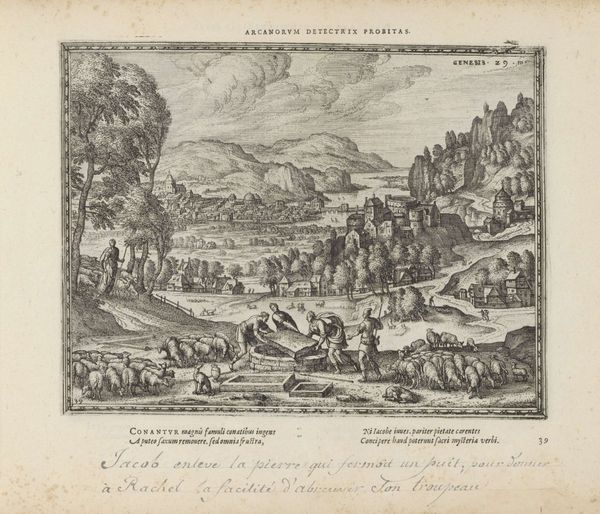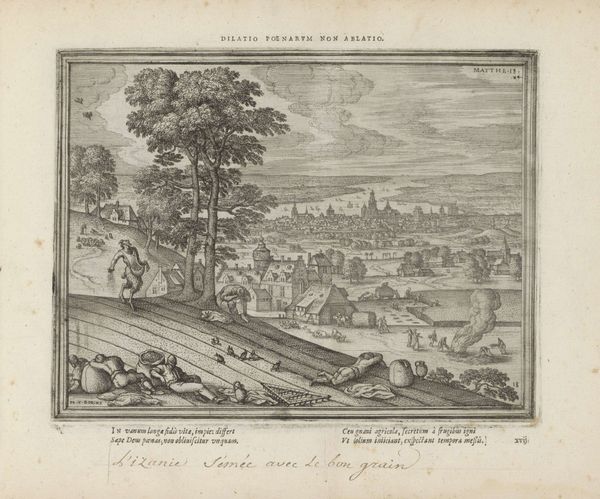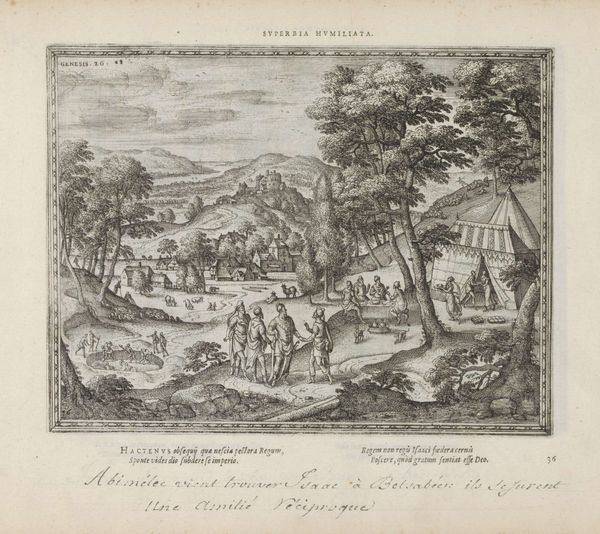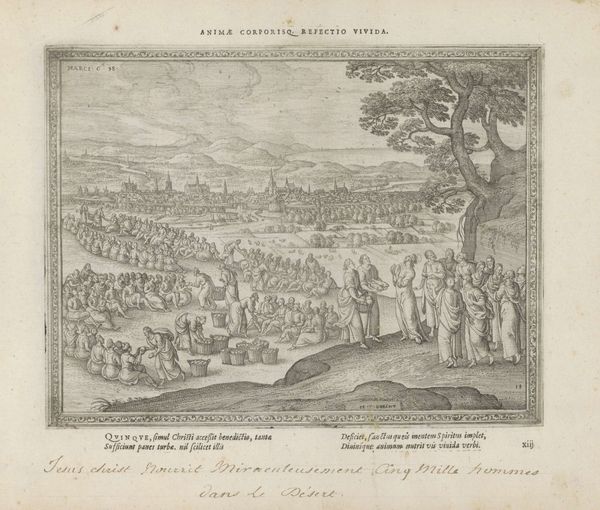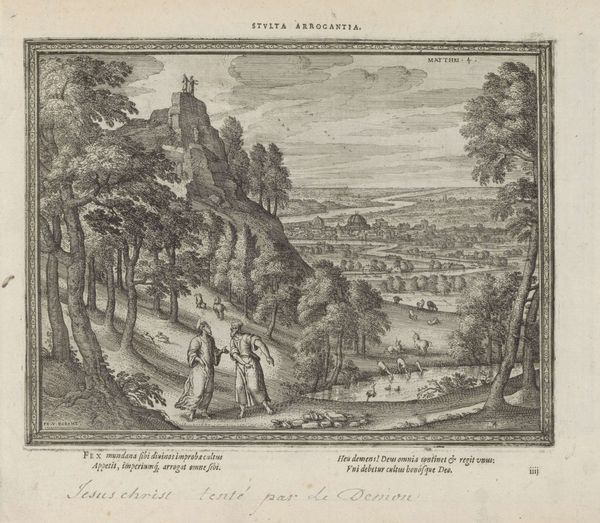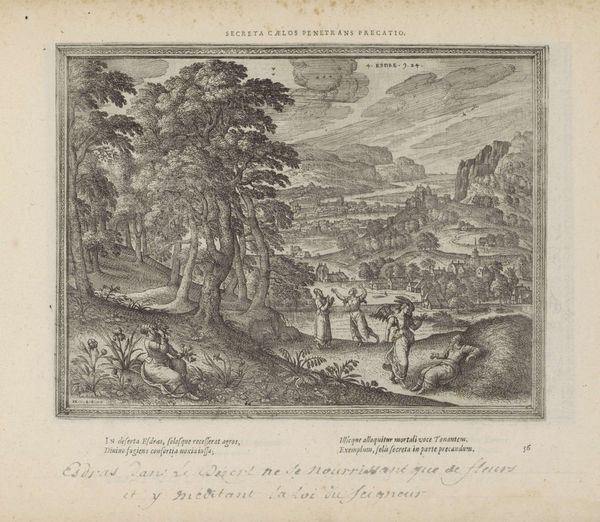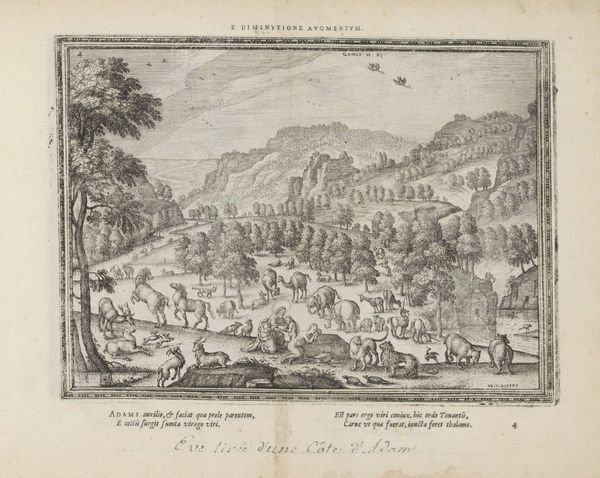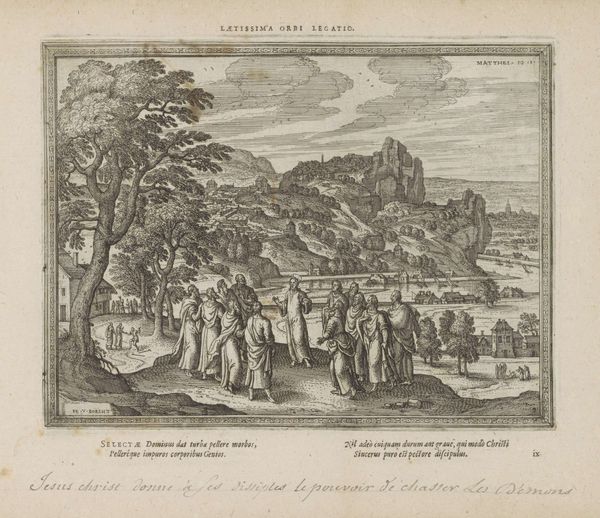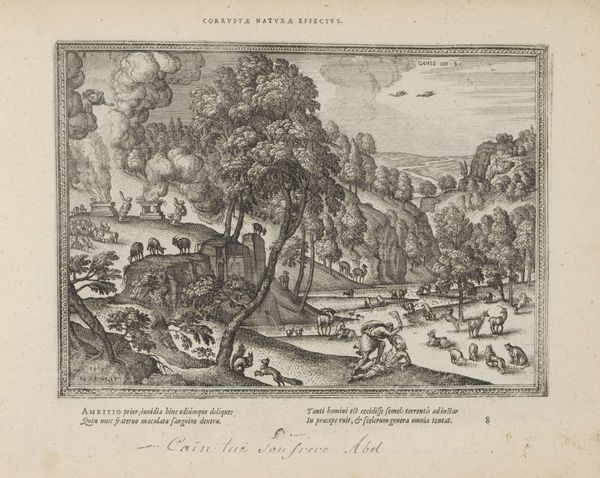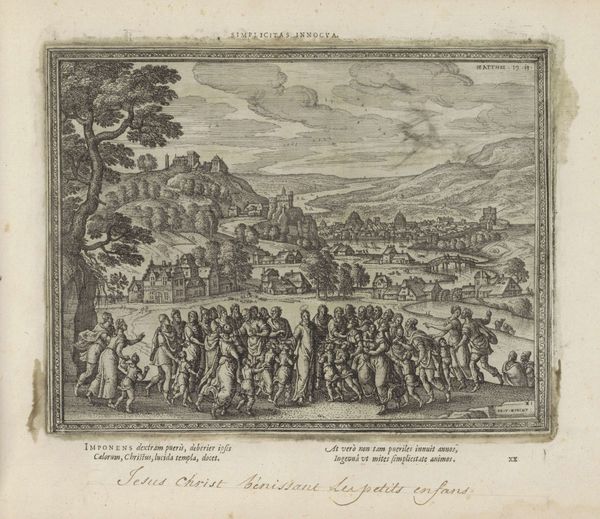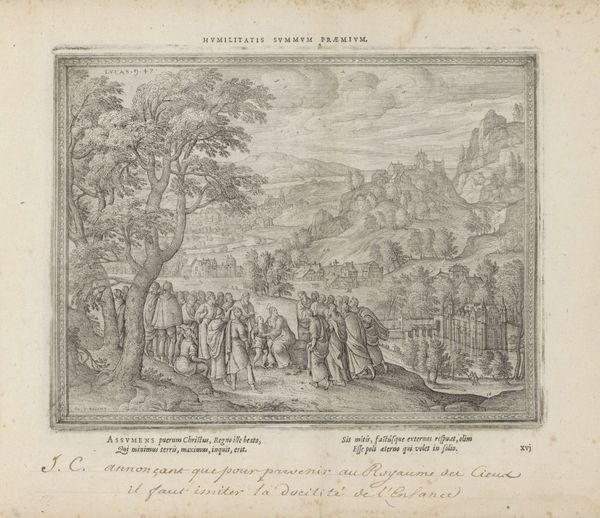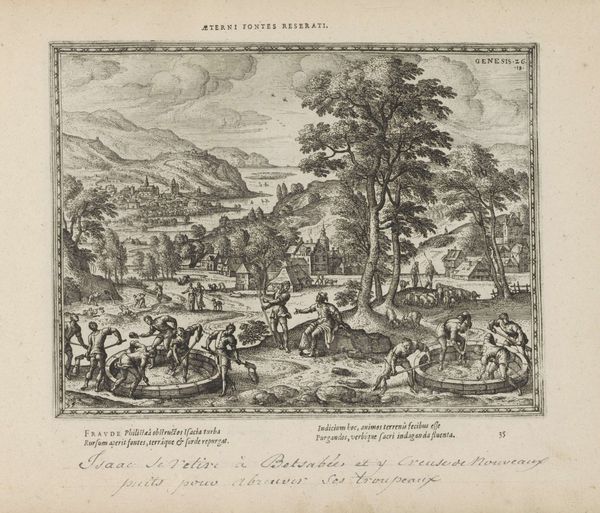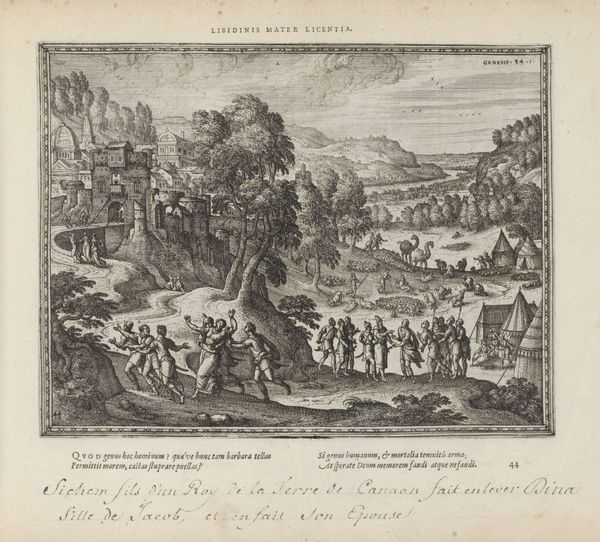
Jakob legt afgeschilde takken in de drinkbakken van de schapen 1582 - 1613
0:00
0:00
pietervanderiborcht
Rijksmuseum
print, engraving
#
narrative-art
# print
#
landscape
#
northern-renaissance
#
engraving
Dimensions: height 189 mm, width 244 mm
Copyright: Rijks Museum: Open Domain
Curator: Pieter van der Borcht's engraving, created between 1582 and 1613, depicts a scene titled "Jakob legt afgeschilde takken in de drinkbakken van de schapen"—which, translated, means Jacob putting peeled branches into the sheep's drinking troughs. It’s currently held at the Rijksmuseum. What strikes you initially? Editor: The detail, certainly. It's remarkable how much texture and depth he achieves with just line work, making this very idyllic landscape unfold. It almost feels like I'm peering into a miniature world with its town atop the hill. Curator: Absolutely. Note the Northern Renaissance style, evident in the detailed landscape. Look at the engraved lines, which provided printmakers of that time the capability for mass production and circulation of images like this. It’s also clearly narrative art. Here, the image serves to illustrate a biblical story. It’s one scene from the life of Jacob, who is shrewdly influencing the flock through an intentional act. Editor: If we examine those marks closer to create forms, they reveal much. The linear precision delineates not just shape, but also variations in tone, creating depth and atmospheric perspective. We notice how strategic hatching can turn something flat into something round! It manipulates light so cleverly! Curator: The medium itself – engraving – is interesting. It suggests that this image wasn’t necessarily intended as a standalone work, but likely as part of a series of illustrations or a larger book, destined for consumption. How would the content and production of this image influenced the broader understanding of labor and manipulation of agricultural resources? The branches become a visual tool for production! Editor: I wonder too what this black-and-white image sacrifices in representing reality. The color scheme, no doubt, shifts to an artificial level within which shapes themselves dominate and almost seem "ideal". What choices does the artist invite when he deprives himself of hues? Does form gain new heights of importance? Curator: Certainly, by stripping away color, the image prompts focus on other things – production, labour and Jacob’s trickery. Overall, I believe Borcht uses a combination of narrative clarity and detailed rendering, creating both an intriguing scene and demonstrating a fascinating level of precision. Editor: A demonstration not just of skill, but also the artistry through line, revealing and idealizing. I'm now very much engaged and taken into the image, to consider its various effects.
Comments
No comments
Be the first to comment and join the conversation on the ultimate creative platform.
